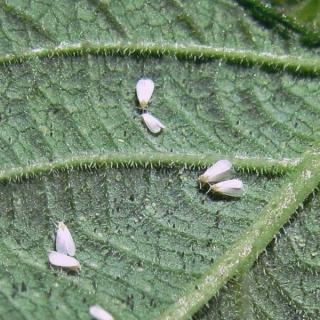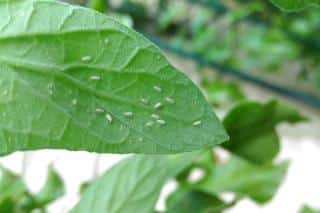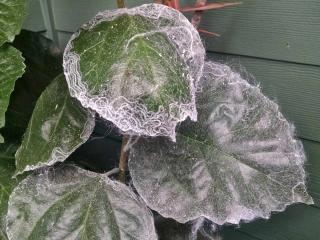

Whitefly is a tiny insect that attacks all kinds of plants, particularly:
hibiscus, geranium, greater celandine, fuchsia and certain vegetables from the vegetable patch such as tomato.
After forming a large colony under the leaves, these insects suck the sap of the plant and weaken it. They also make leaves sticky and cause sooty mold to appear.
A large-scale invasion can even lead to the plant’s demise.
 The main causes of whitefly appearing on plants are:
The main causes of whitefly appearing on plants are:
 Traditional methods like insecticides or aphid treatments can be effective, even though they only target adult insects and don’t destroy eggs.
Traditional methods like insecticides or aphid treatments can be effective, even though they only target adult insects and don’t destroy eggs.
If those methods are applied, repeat treatment every 3 days over a 2 to 3 week period. Be careful! These products are often dangerous to breath in.
 Place whitefly traps. In specialized horticulture stores, you can find sticky glue that can be applied on any yellow surface, since whiteflies are attracted by that color.
Place whitefly traps. In specialized horticulture stores, you can find sticky glue that can be applied on any yellow surface, since whiteflies are attracted by that color.In all above cases, you can bring infected plants to a cool room since these parasites need heat to develop.